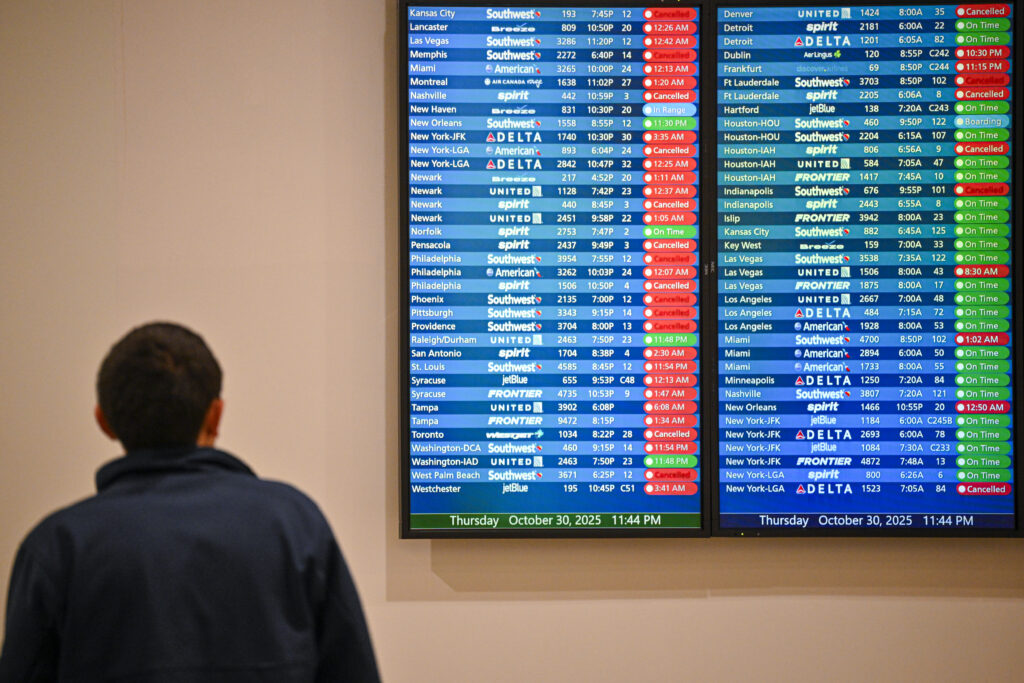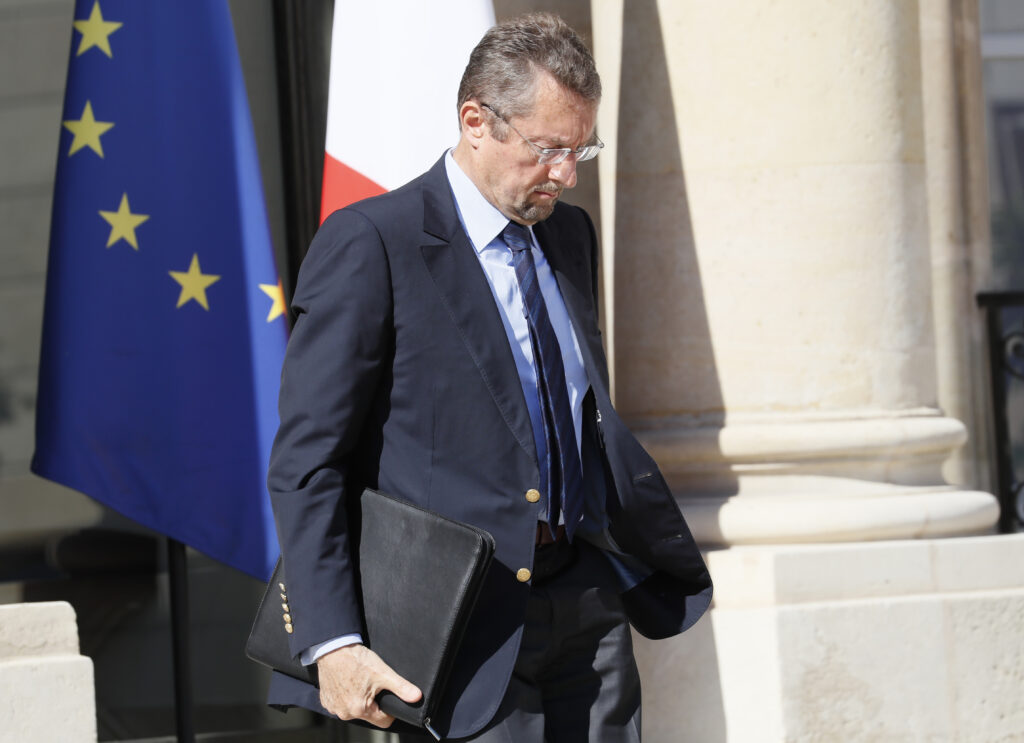Aux Etats-Unis, la paralysie budgétaire va déclencher l’annulation de milliers de vols
Des milliers de vols vont être annulés à partir de vendredi aux Etats-Unis en raison du blocage budgétaire qui s’éternise dans un contexte de confrontation politique entre républicains et démocrates.Le gouvernement américain a annoncé mercredi qu’il allait demander aux compagnies aériennes de supprimer des vols à compter de vendredi pour “réduire la pression” sur le contrôle aérien, confronté à davantage d’absences en raison du “shutdown”.”Nous allons réduire les capacités” de vols “de 10% dans 40” aéroports, parmi les plus fréquentés du pays, a déclaré en conférence de presse le ministre des Transports Sean Duffy.La liste officielle des aéroports touchés doit être publiée plus tard jeudi, mais selon les médias américains le nombre de vols sera réduit dans les aéroports de Chicago, Dallas, Los Angeles, New York, Miami et Washington notamment.Les vols internationaux ne sont pas concernés par cette mesure, a précisé une source, s’exprimant sous couvert de l’anonymat, à la chaîne ABC News.United Airlines a publié un communiqué affirmant que les vols internationaux long-courriers et ceux entre plateformes de correspondance (“hubs”) ne seraient pas affectés.Les réductions de vols commenceront à 4% vendredi et atteindront progressivement 10%, selon les médias américains.”Il nous manque 2.000 contrôleurs aériens”, a expliqué mercredi le ministre des Transports, ajoutant qu’il fallait “réduire la pression” en diminuant le nombre de vols à superviser pour les équipes.Les Etats-Unis sont entrés mercredi dans leur 36e jour de blocage budgétaire, battant ainsi le record du plus long “shutdown” de l’histoire du pays.Républicains et démocrates sont incapables, depuis le 1er octobre, de s’entendre sur un nouveau budget.Résultat: des centaines de milliers de fonctionnaires fédéraux sont au chômage technique tandis que des centaines de milliers d’autres sont forcés de continuer à travailler. Ils ne reçoivent pas de paie jusqu’à la fin de la crise. Plus de 60.000 contrôleurs aériens et agents de la sécurité des transports sont dans le deuxième cas de figure. Et plutôt que de travailler sans salaire pendant plusieurs semaines, certains ne se présentent pas à leur poste. – “Très inhabituelle” -L’annonce par les autorités de la suppression d’un nombre important de vols intervient avant un week-end propice aux voyages aériens, mardi 11 novembre étant férié aux Etats-Unis.Elle risque de renforcer l’impopularité du “shutdown” dans l’opinion publique, au lendemain de plusieurs élections clés, où l’opposition démocrate a signé de larges victoires.Le ministre Sean Duffy avait mis en garde mardi contre les risques de “chaos”: “Vous nous verrez peut-être fermer certaines parties de l’espace aérien, simplement parce que nous ne pourrons pas le gérer, faute de contrôleurs aériens”, avait-il déclaré, rejetant la responsabilité sur les démocrates.”Nous allons demander aux compagnies aériennes de travailler avec nous pour réduire leurs plans de vol”, avait précisé mercredi le patron du régulateur aérien FAA, Bryan Bedford.Il s’agit d'”éviter que la situation ne se dégrade”, a-t-il ajouté au côté du ministre.Airlines for America, une association professionnelle représentant de nombreuses grandes compagnies aériennes américaines, a indiqué dans un communiqué qu’elle chercherait à “atténuer les impacts pour les passagers”.Bryan Bedford a dit ne pas se souvenir qu’une telle réduction ait déjà été décrétée “pendant (s)es 35 ans de carrière dans le secteur aérien”.”C’est une situation très inhabituelle. Nos contrôleurs n’ont pas été payés depuis un mois. Nous avons hâte de pouvoir travailler normalement à nouveau”.”Les contrôleurs qui continuent à venir font des heures supplémentaires, travaillent plus de jours (…) et nous voulons réduire cette pression (sur eux, NDLR) avant que cela ne devienne un problème”, a poursuivi M. Bedford.En moyenne, 44.000 vols sont supervisés par la FAA chaque jour, selon son site internet.Plus de 10.000 vols, à destination ou en provenance des Etats-Unis ont connu des retards le week-end dernier, selon le service de suivi FlightAware.






